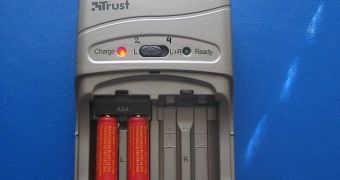The next generation of lithium-ion batteries could recharge in just 15 minutes, and remain operational for at least a week, according to a new report from scientists at the Northwestern University.
The group developed a new method for boosting battery efficiency, which relies heavily on the use of a bi-dimensional carbon compound called graphene. The material has a hexagonal structure, and boasts impressive chemical and physical properties.
Currently, graphene is not widely used because obtaining it is a very complex process. However, recent advancements in manufacturing techniques are bringing the material closer and closer to being available on a large scale.
As this happens, we can expect to see more and more researches based on its properties. For the latest one, NU experts decided to improve on past designs that called for graphene to be introduced in Li-Ion batteries. The team says that its new power storage devices recharge 10 times faster than any other.
Investigators published their research in the latest issue of the esteemed scientific journal Advanced Energy Materials. “We have found a way to extend a new lithium-ion battery’s charge life by 10 times,” reports the lead author of the new paper, Harold H. Kung.
“Even after 150 charges, which would be one year or more of operation, the battery is still five times more effective than lithium-ion batteries on the market today,” adds the expert, who is a professor of chemical and biological engineering in the McCormick School of Engineering and Applied Science.
The new batteries, he explains, feature anodes made up of silicon and graphene. The former is known for its ability to store 4 lithium atoms for each silicon atoms, but is highly unstable as a result. Graphene holds 1 lithium atom per six carbon atoms.
By combining the two chemicals, the research team managed to successfully obtain the best of both worlds. “We have much higher energy density because of the silicon, and the sandwiching reduces the capacity loss caused by the silicon expanding and contracting,” Kung says.
“Even if the silicon clusters break up, the silicon won’t be lost,” he goes on to say. The main issue silicone anodes have is that they tend to contract and expand with each recharge cycle. This leads to fragmentation and loss of charge.
The NU team now plans to continue developing this new approach to manufacturing lithium-ion batteries. Experts hope to bring the approach to the market as soon as possible.

 14 DAY TRIAL //
14 DAY TRIAL //